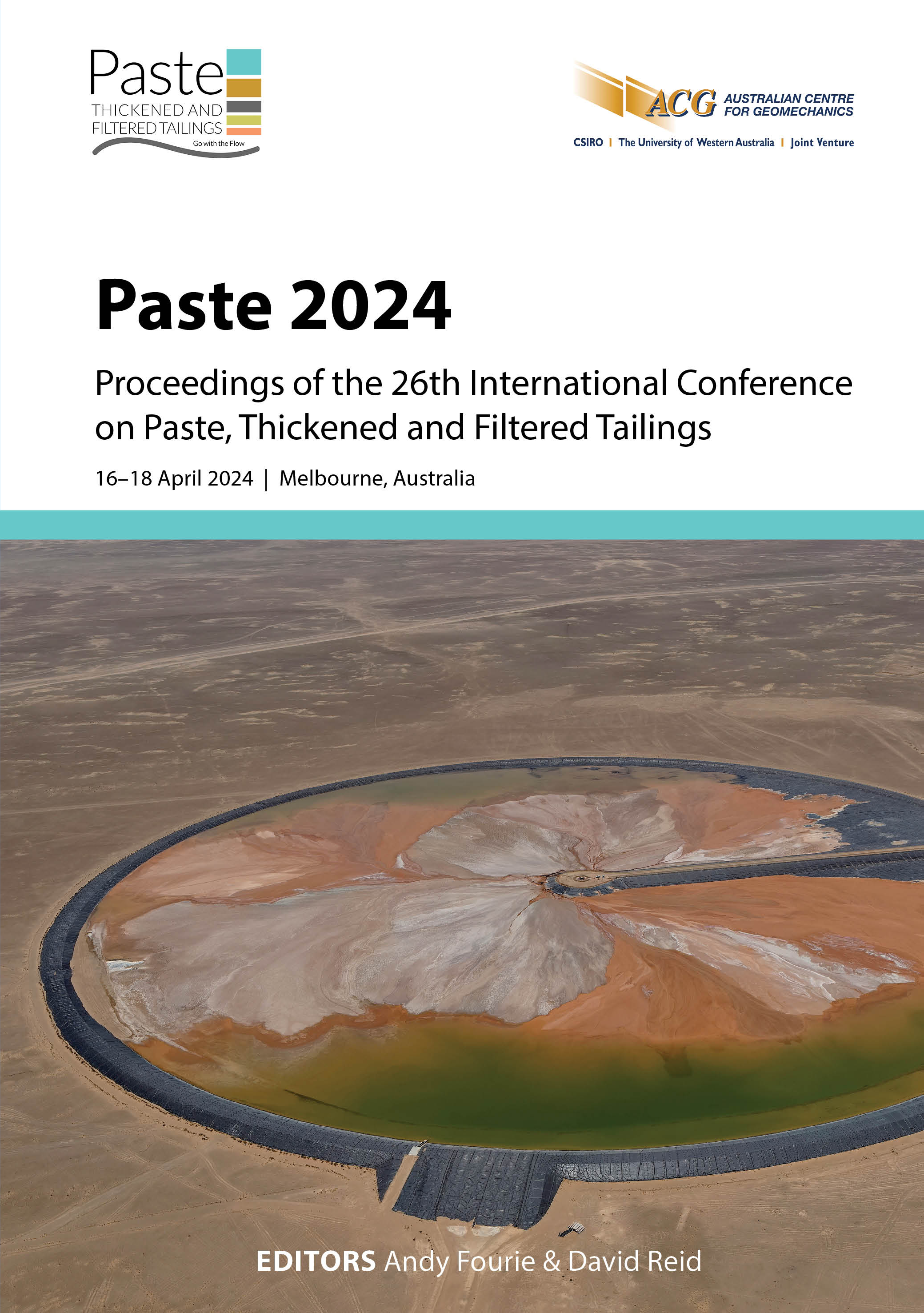Tailings filtration toward smaller filters with higher efficiency

|
Authors: Sommacal, E; Brum, JC; Doveri, F; Boriello, A |
DOI https://doi.org/10.36487/ACG_repo/2455_06
Cite As:
Sommacal, E, Brum, JC, Doveri, F & Boriello, A 2024, 'Tailings filtration toward smaller filters with higher efficiency', in AB Fourie & D Reid (eds), Paste 2024: Proceedings of the 26th International Conference on Paste, Thickened and Filtered Tailings, Australian Centre for Geomechanics, Perth, pp. 95-104, https://doi.org/10.36487/ACG_repo/2455_06
Abstract:
The filtration of tailings, especially in recent times given the general increase in prices, the decrease in available areas, and the ever-increasing drive towards recovery and reclamation, is becoming a race towards greater efficiency and productivity to reduce the dimensions of treatment plants and their overall costs. So, what are the improvements that can reduce machinery sizes and the project's overall costs? First, as every site has its own characteristics, the plant must be studied in its scenario so the machines are optimised to treat the site-specific material. Test studies on cycle times and other pressing parameters are the key to designing the perfect plant for each application, reducing unnecessary losses in time and performance. Filtration pressure is one of the most impactful variables in the process parameters. Moving to higher pressures, directly and indirectly, impacts the filtration times and therefore the overall dimensions of the machinery because it permits obtaining cake that is also better formed and less moist in less time. This change alone can significantly reduce the volume needed to treat the same amount of sludge, thus resulting in a reduction of the space required for the installation. Another process parameter that significantly impacts the dimensions of the machinery is the mechanical time, i.e. the time that the machine needs to stay idle to perform all the required steps for its opening/closing, discharging, washing etc. Reducing these dead times is essential to improve equipment efficiency. Other than this, the sheer amount of daily (and hourly) dry solids, which easily reach multiple thousands of tonnes per hour, is another factor that impacts this type of application. Capex and opex, as well as land consumption, are to be kept within tight limits, while at the same time, productivity, efficiency and quality of the final cake have to be as high as possible. This is where technology plays a crucial role. Treating lots of material without losing performance is what leads to the future of a well-designed plant.
Keywords: tailings, concentrate, filter press, silt management, dewatering, separation, environment, risk mitigation, efficiency
References:
Cacciuttolo Vargas, C & Pérez Campomanes, G 2022, ‘Practical experience of filtered tailings technology in Chile and Peru: an environmentally friendly solution’, Minerals, vol. 12, no. 7.
Furnell, E, Bilaniuk, K, Goldbaum, Ml Shoaib, M, Wani, O, Tian, X, Chen, Z, Boucher, D & Bobicki ER 2022, ‘Dewatered and stacked mine tailings: a review’, ACS EST Engineering, vopl. 2, p. 728–745.
Williams, DJ 2021, ‘Lessons from tailings dam failures - where to go from here?’, Minerals, vol. 11, issue 8.
© Copyright 2025, Australian Centre for Geomechanics (ACG), The University of Western Australia. All rights reserved.
View copyright/legal information
Please direct any queries or error reports to repository-acg@uwa.edu.au
View copyright/legal information
Please direct any queries or error reports to repository-acg@uwa.edu.au
